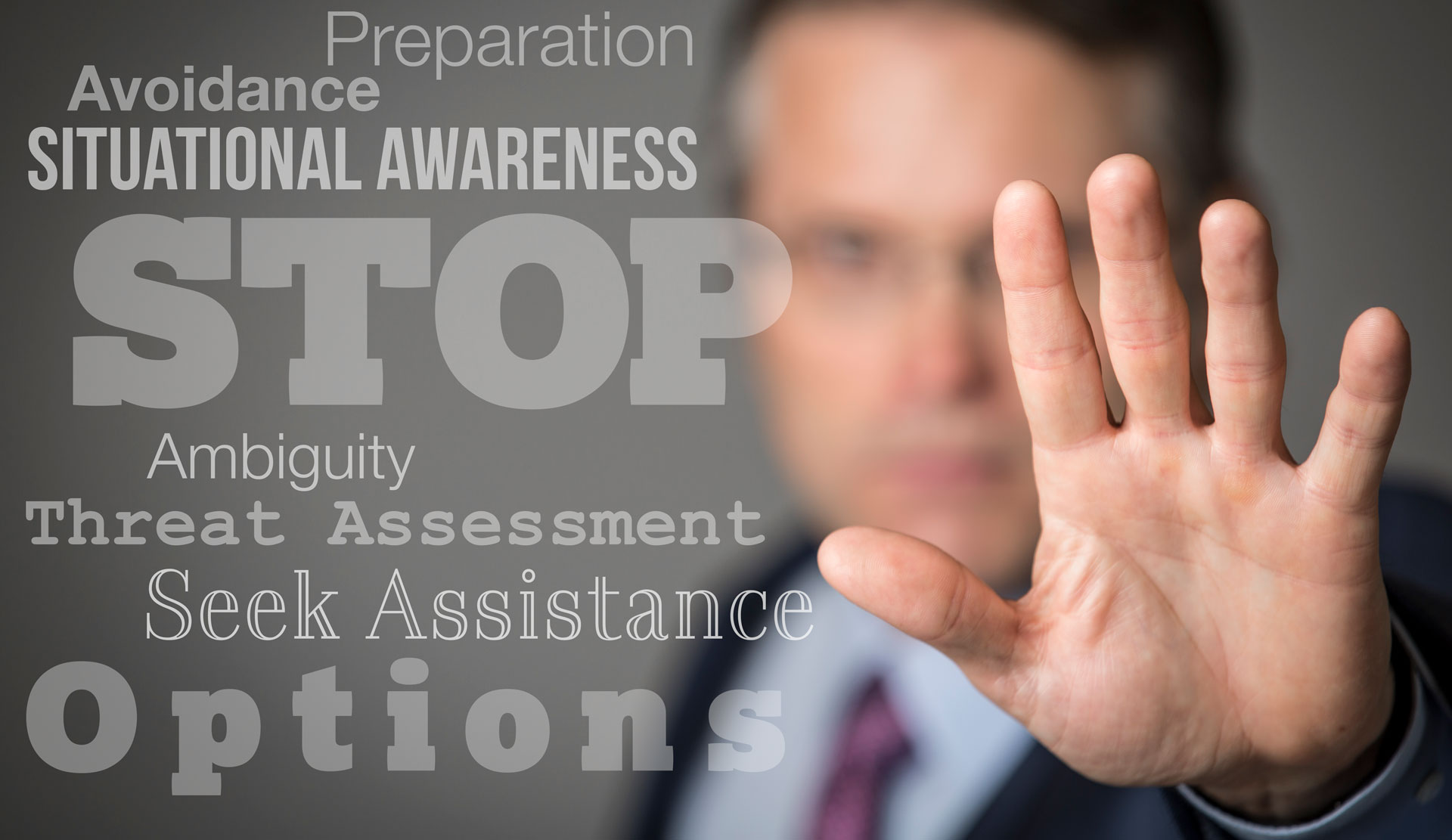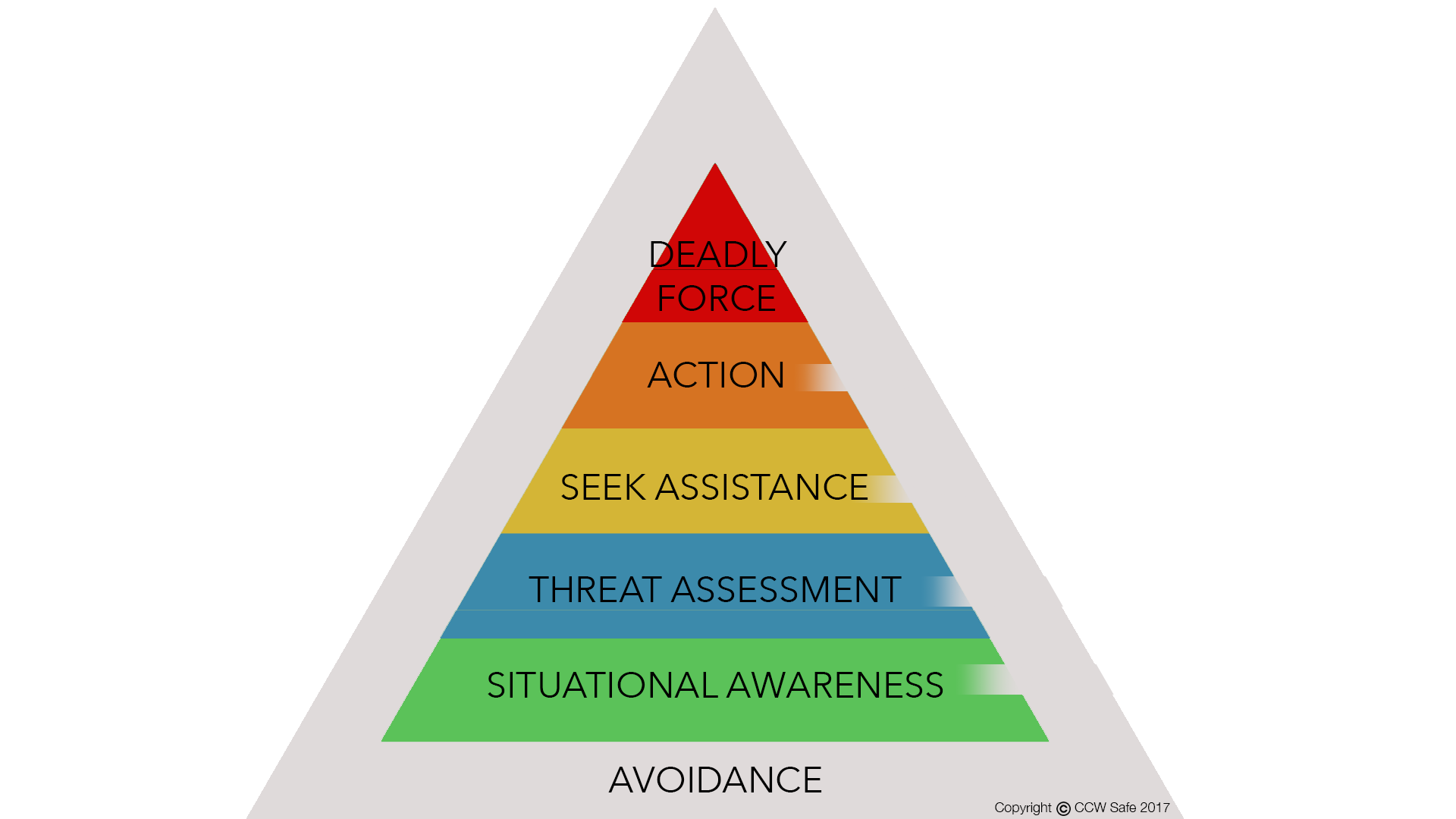
Posted on July 17, 2017
The Civilian Use Of Force Continuum: Level II- Threat Assessment
Level II: THREAT ASSESSMENT
Threat assessment is the second step in the civilian use of force continuum. Once something is identified as outside the norm, or suspect through your situational awareness, you have to assess the threat. Is it a legitimate threat, is it a threat to you, or is it a threat to others? We talked earlier about intuition, and how many people will not follow their intuition. Ambiguity is one thing that can be common in those instances.
Ambiguity exists when something is uncertain, vague, or obscure. How many times have you been approached by a stranger in a parking lot who appears to be asking for gas money, or for some other handout? This has happened to me numerous times, and it always starts with them making eye contact, holding up a hand, or waiving to get your attention. I have even been approached by a car in a parking lot trying to flag me over. In most, if not all cases, this is a very vague, ambiguous situation. You don’t know if you are going to be asked for directions, for a handout, or are being targeted as a victim. By removing that ambiguity, it can give more information on their intentions. “Stop! Don’t come any closer.” To some this may be uncomfortable, they may not want to offend the person, or they may just avoid conversation. But by taking away that ambiguity, you have a little more information about their intentions. If they proceed further, it might be an indication that they have ill intentions and it would be a good idea to remove yourself from that situation by getting into your car and locking the door. If they proceed even further and try to get into your car, now it is clear that there is no ambiguity to your situation. Removing the ambiguity also makes it much more clear to articulate later if you are forced to take action with physical or deadly force.
Distance and barriers are very important at this stage of assessing a threat. Through good situational awareness, you should be able to determine various barriers and avenues of avoidance, if you deem something as out of the normal, or something that may require threat assessment and possible defensive action. In the example above, if you were in a situation where you felt you needed to remove the ambiguity, you should already have a good idea of your distance, and how you can maintain that distance should the person continue toward you if you ask them to stop. If you can remove yourself from that situation, say by getting into your car and locking the doors, would be a good example of a barrier. If not, by moving around the car, keeping it between you and the suspect would provide distance and a barrier, however, getting inside the car and locking the doors would obviously provide a better solution. And if the suspect were to try to open the door, or gain entry by force, then the situation would have drastically advanced, and should obviously seen as defensive if you are forced to defend yourself.
In another example, which we released earlier to our members as a claims committee report, distance and barriers might avoid legal trouble in certain situations. Earlier this year we had experienced several calls from members who had been arrested for brandishing. One particular example was a “road rage” type of situation where 3 men stopped a car and jumped out aggressively because they thought they were being followed. Our member, who was behind them, stopped his car, opened the door and unholstered his firearm. Even though he didn’t point it at them, he was arrested for brandishing. By removing himself from his car, he gave up both his barrier, and ability to distance himself further by driving around them and continuing to drive. Again, if they blocked his way, or tried to get into his vehicle, it might have been a different outcome if he unholstered his firearm, even if they still called the police on him. This is also an example of the next stage, which is to call for assistance
If there is a way to remove yourself from that situation, again, that opportunity should be taken, as it is advisable to always fall back on avoidance. That would allow you to go to the next step in the continuum, which is assistance, calling the police or yelling for help. If you are unable to remove yourself from that situation, then your actions would be based on their actions. Again, the use of force continuum is not based on hard set rules, but guidelines that are based on the actions of the person who is putting you in this situation.
If you have missed any of the previous articles, below are links.
Preparation and Avoidance Level I Situational Awareness Level III Seek Assistance Level IV Action Level V Deadly Force

Mike Darter
Co-Founder/CEO CCW Safe
Mike was a police officer in Oklahoma City from 1991-2001, and a federal contractor for the DOJ from 2001-2011. During his career, Mike investigated and testified in hundreds of violent crimes, including shootings, homicides, and other violent felony crimes. Mike was involved in a shooting as a police officer and went through a lawsuit from that shooting. The lawsuit was later dismissed, but his experience is what led to the creation of CCW Safe.
